In Lewis Carroll’s Alice in Wonderland, the king recommended, “Begin at the beginning.”
It’s good advice when it comes to visiting the place where America began. When you’re deciding where to go, what to see and whom to meet in Colonial Williamsburg’s Historic Area, a little advice to get you started comes in handy as you plan your visit.
Should you start with The Art Museums? A carriage ride? The Gunsmith Shop? You could try to meet the people you have long read about in history books or seek out lesser-known people with amazing stories of their own to tell — or both.
Fortunately, there is more than one way to navigate through this 18th-century town. Each time you visit, you can take in the sights, sounds and stories in a new way.
Maybe you like learning about the history of our original and reconstructed buildings? Maybe your father is interested in social history? Your children? They like to explore. And grandmother and grandfather want to see the place they love through their grand-children’s eyes.
We asked experts from across The Colonial Williamsburg Foundation — the people who work hard to educate, entertain and engage guests — to tell us about the places, people and sites they would introduce to visiting family and friends.
See the full slate of programs, sites and events Colonial Williamsburg has to offer on the Online Events Calendar or download the Colonial Williamsburg Explorer app.

A Forensics Tour
Meredith Poole
Senior Staff Archaeologist
So much detective work goes into presenting the past. As an archaeologist, my favorite way to experience the Historic Area is through the lens of “how we know what we know” about buildings, furnishings, trades, landscapes and the people who have inhabited Williamsburg over hundreds of years. No surprise: my top recommendations are archaeological.
- Dig! Kids, Dirt & Discovery and Dug!: The Cleaner Side of Archaeology gives children the opportunity to play archaeologist for a day. See the archaeology labs through the program Rubbish, Treasures and Colonial Life or you can chat with archaeologists at work at the John Custis IV site, a new project that promises to teach us more about the eccentric politician, planter and first father-in-law to Martha Washington, as well as about the enslaved people who lived on the site.
- When we aren’t rebuilding structures, we’re fleshing out people. Founders Lab explores how we bring the characters of George Washington and James Madison to life.
- Where can you see the results of our most recent research? Two of my favorite places are the Public Armoury, where even the composition of the kitchen floor was under the microscope, and the freshly painted hall of the Governor's Palace.
- Take an evening stroll on Duke of Gloucester Street. Notice how uplighting at the Courthouse reveals names carved into the brick. What’s the earliest date you can find? Who has the best penmanship? Who was the tallest?
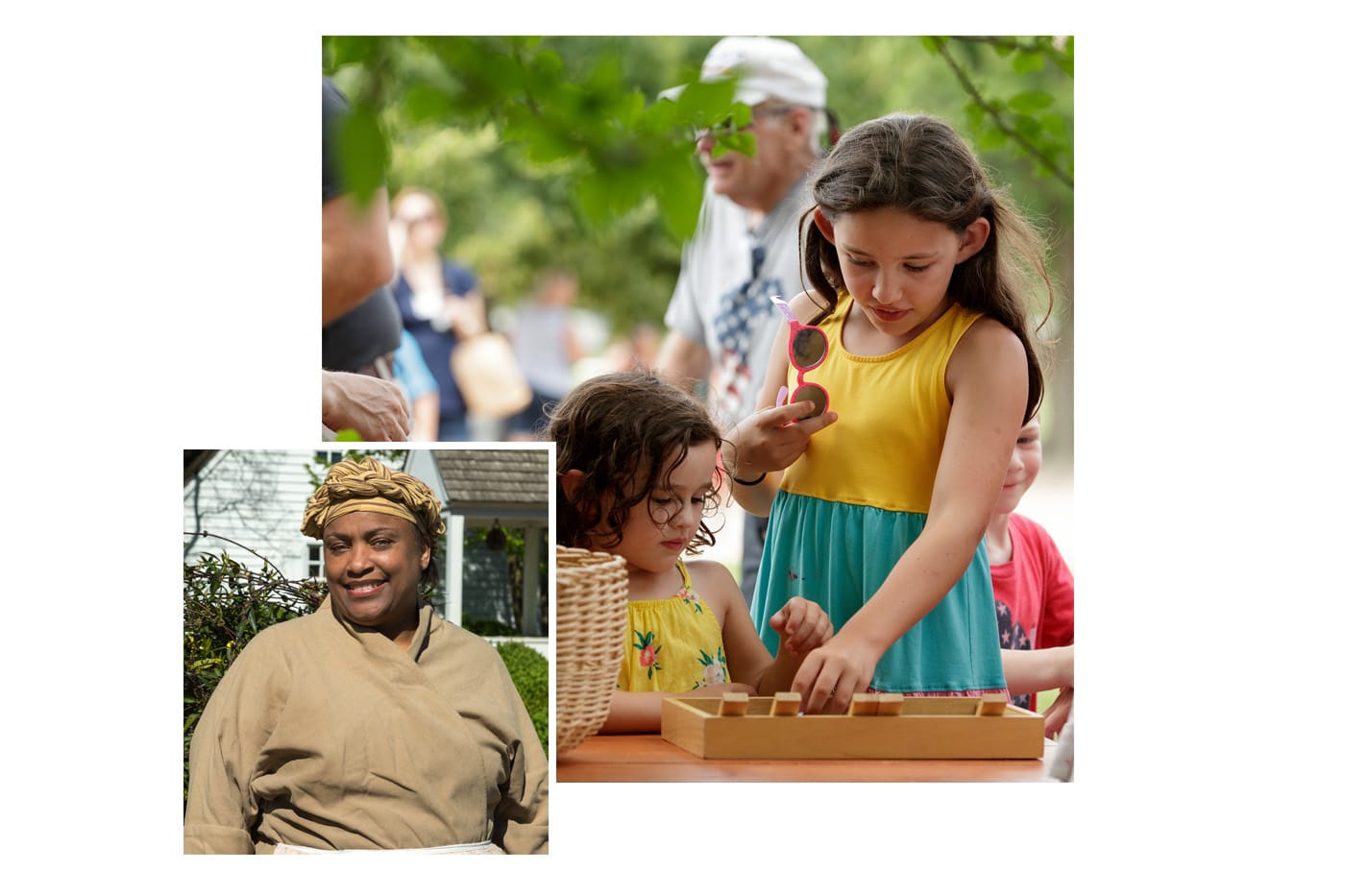
Advice from Venus
Kat Getward
Supervisor of Orientation Interpretation
After more than 30 years of engaging with visitors as an interpreter, telling stories as a woman named Venus and supervising interactive programs, I continue to have aha! moments. I want you to stumble upon your own aha! moments. My itinerary offers a little advice to make sure you find them.
- You will run into many historical figures when you visit R. Charlton’s Coffeehouse and the Raleigh Tavern. Take advantage of it. If you see an interpreter polishing spoons, playing an instrument or sewing a garment, ask them about what they’re doing. And if you see me playing Shut the Box along Duke of Gloucester Street, challenge me to a game at your peril. The loser has to do a funny dance in the street!
- Tread clay in the Brickyard, search for secret compartments in the secretary at the entryway of the Cabinetmaker shop or feel the weight of an ingot of silver in the SILVERSMITH shop. There is no better way to learn about history than to interact with it.
- Get the best view of the Historic Area by taking a Carriage or Ox Wagon Ride. While you admire the historic homes, trade shops and government buildings, take the opportunity to talk to your carriage driver about the town from his or her view from the driver’s seat. Plus, horses. Who doesn’t want to meet the horses?
- During the day, you learn all about true stories from the past. In the evening, you can hear tales from the beyond. Haunted Williamsburg, for guests ages 8 and older, takes you into the buildings to hear eerie tales about Williamsburg. Your little ones will enjoy hearing traditional ghost stories with a Colonial Williamsburg spin during the Official Ghost Walk Junior.
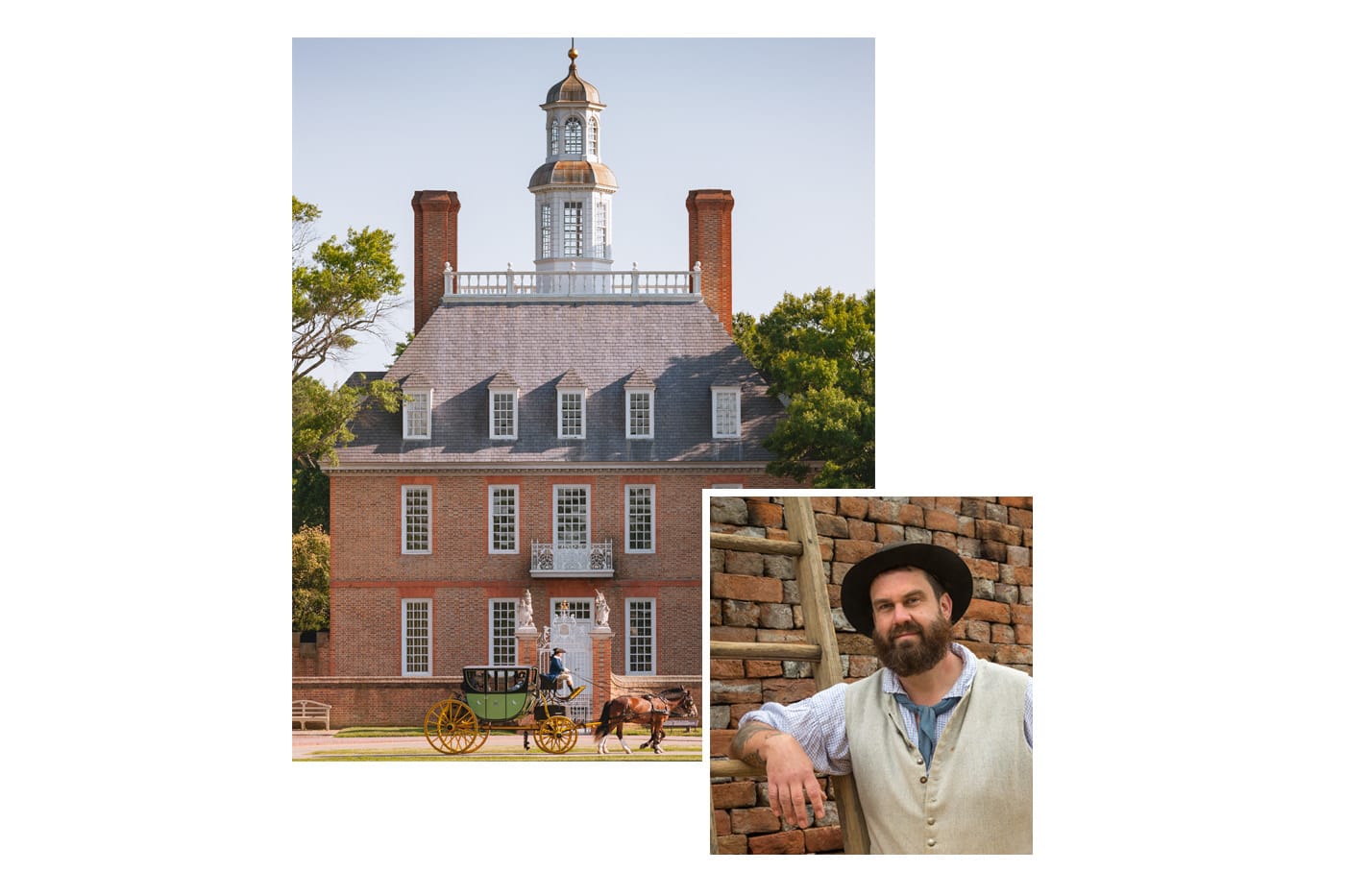
Admire the Architecture
Josh Graml
Journeyman Brickmaker
What sets Colonial Williamsburg apart from other museums that present the 18th century is the collection of buildings, both original and authentic reproductions, that can tell a story as compelling as any human interpreter you meet on Duke of Gloucester Street.
- Stand on the Palace Green and look in any direction. You’ve got the Governor's Palace , Bruton Parish Church and the homes of merchants and lawyers and planters. Think about what these inhabitants are telling you about themselves through their architecture.
- It’s rare that a bricklayer praises a carpenter, but the Carpenter's Yard is an important stop if you want to understand Virginia architecture. These folks create the guts of all the buildings you visit here and, just like the Brickyard,(go see that too!), have to deal with the logistical headaches of bringing all these materials together in a preindustrial world.
- Make sure to make a stop at the Joinery. Oh no, more carpenters? Indeed! A building is not just all brick and framing and siding. Take a look at how the finer stuff that makes up the interiors comes together. What good is a home with no bookcases?
- If you can find the always busy Mr. Jefferson in Visit a Nation Builder, take a moment to get his perspective on architecture. Perhaps his famously derogatory opinions on Virginia’s architectural tastes (Williamsburg especially) can be forgiven when we recall that this self-taught gentleman architect designed Monticello. Perhaps.
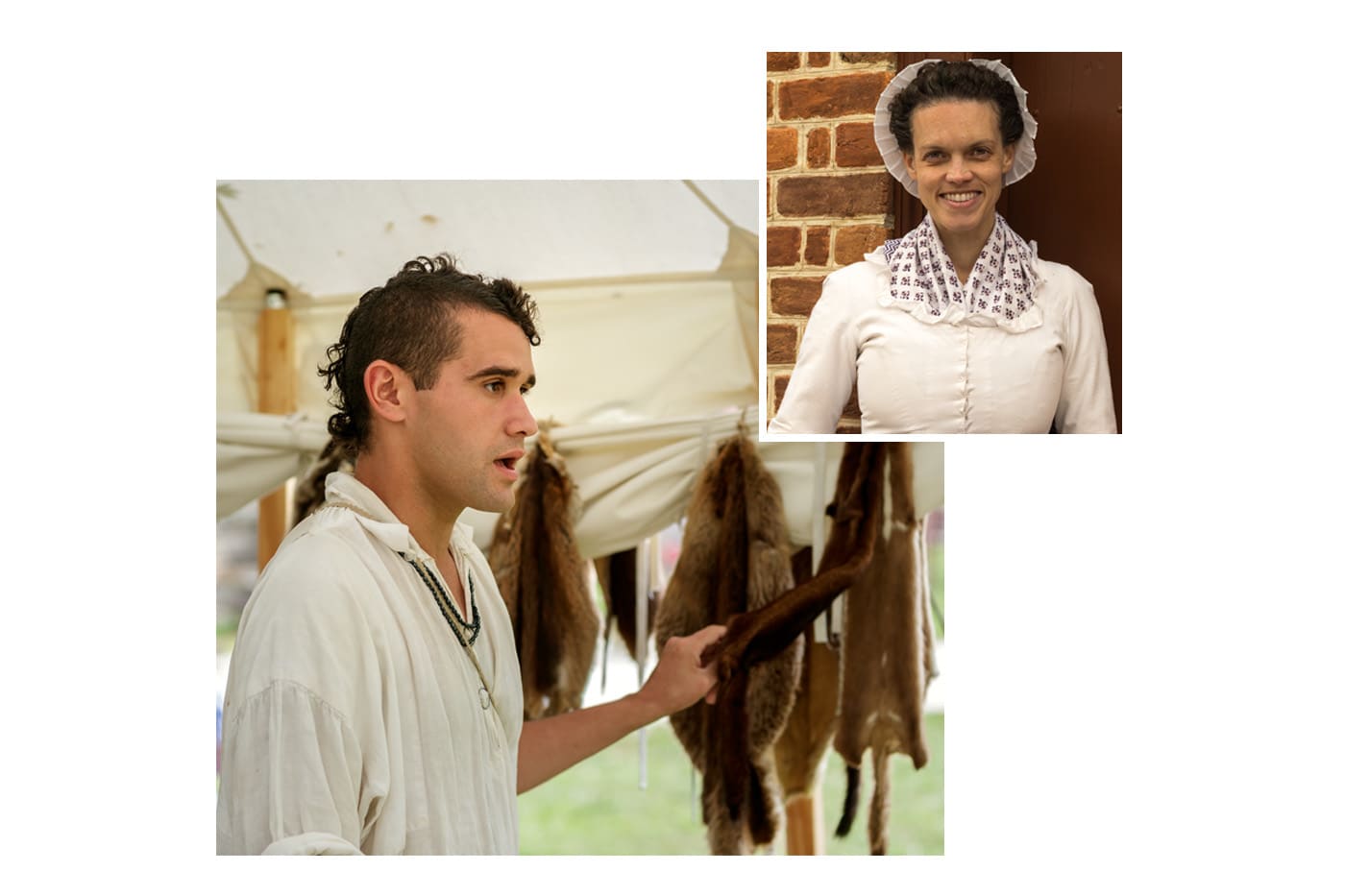
Soak Up Social History
Mary Carter
Nation Builder Aggy of Turkey Island
As an interpreter for the past 11 years, I have thought a lot about what the people I portray would likely have thought and felt about the world around them. When you visit the Historic Area, I hope you try to do the same. Ask yourself the question, “Who was living here?” — and that means everyone who lived here, worked here, loved here. Who were they? What was their life like every day?
- Visit the Peyton Randolph House for the best demonstration of how enslaved individuals and their owners could be defined as separate by law but intertwined in their everyday lives.
- After a conversation with the Famous Barber of York, Caesar Hope, you will have a sense of the different types of interactions that would have happened regularly between the black and white populations.
- Did you know that Pamunkey have fought with the Americans in every war since the French and Indian War? I learned that fact when I visited the Indian Delegation. Our American Indian interpreters are a fount of knowledge, and I encourage anyone to stop by for a chat, attend the Native AMerican Life Series or sign up for the Native American Culture Close Up.
- Make sure you experience the exhibition Revealing the Priceless: 40 Years of African American Interpretation at the Raleigh Tavern. The faces of those who have worked to bring the stories of the enslaved people of Williamsburg to life are displayed opposite a wall filled with the known names of the enslaved between 1763 and 1785. It’s a powerful display that will have you reflecting on our shared American story.
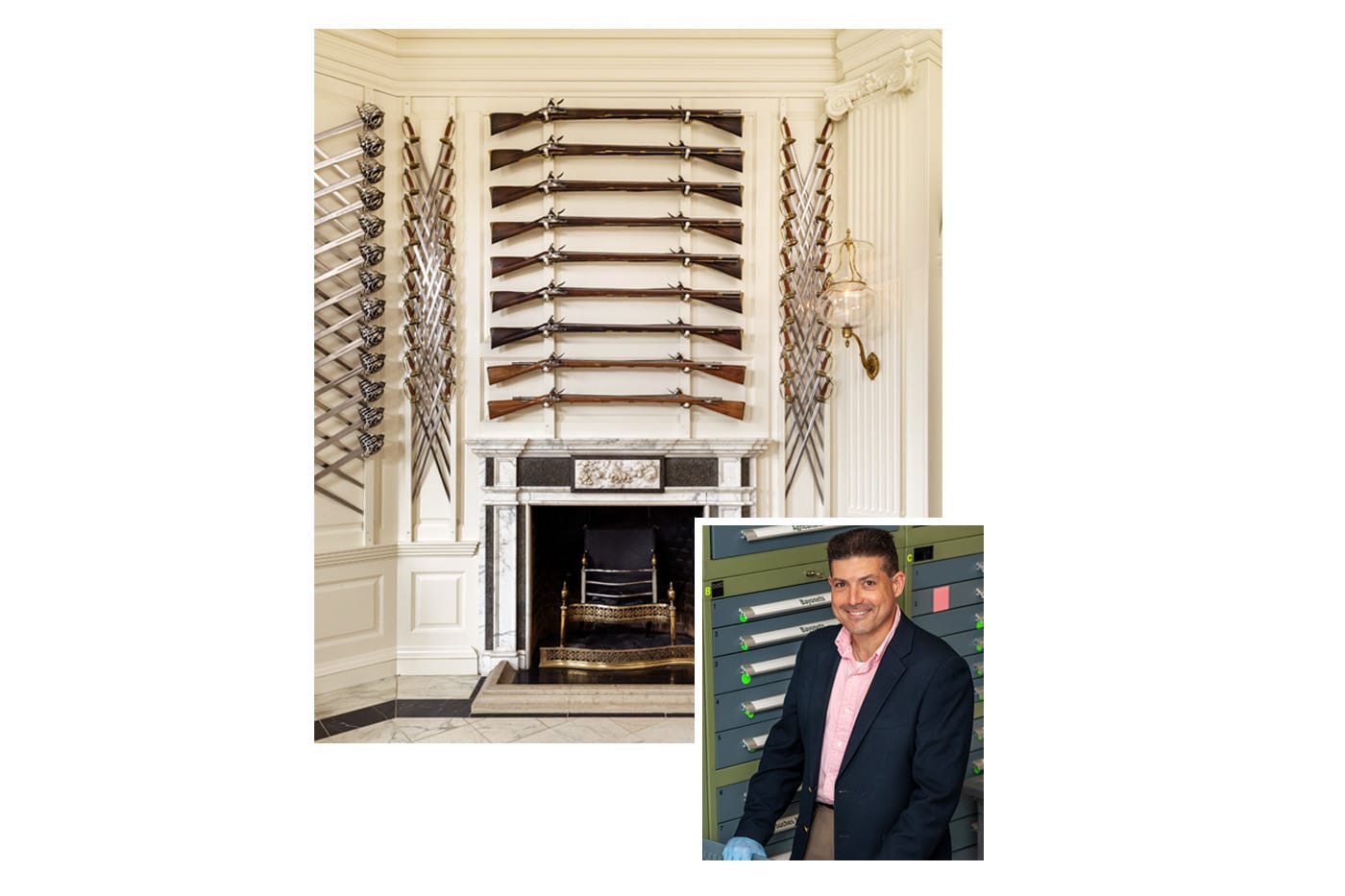
Follow the Flintlock
Erik Goldstein
Senior Curator of Mechanical Arts and Numismatics
Since I’ve been nicknamed “Curator of Cool Guy Stuff,” I think folks of all sorts would enjoy a trip that shows them the different aspects of the flintlock firearms of the Revolutionary period. Colonial Williamsburg offers the chance to look and experience these arms from their creation to their actual use, and there is almost too much to choose from. Like a well-balanced diet, I’d recommend a healthy sampler platter of these early firearms.
- Start with the new exhibition To Arm Against an Enemy, Weapons of the Revolutionary War at The Art Museums of Colonial Williamsburg to see some of the finest original arms of the period.
- Then head to The Gunsmith Shop to see how flintlocks were handmade during the late 18th century. From forging barrels to inlaying silver wire, they do it all.
- At the Public Armoury, you will see where Virginia repaired arms and made ammunition during the Revolutionary War.
- When you stop by the Geddy Foundry, you will learn how molten brass is cast into gun hardware.
- End your tour of flintlocks at the Governor's Palace to see the arms display with its 230 muskets, including 80 originals from the 18th century.
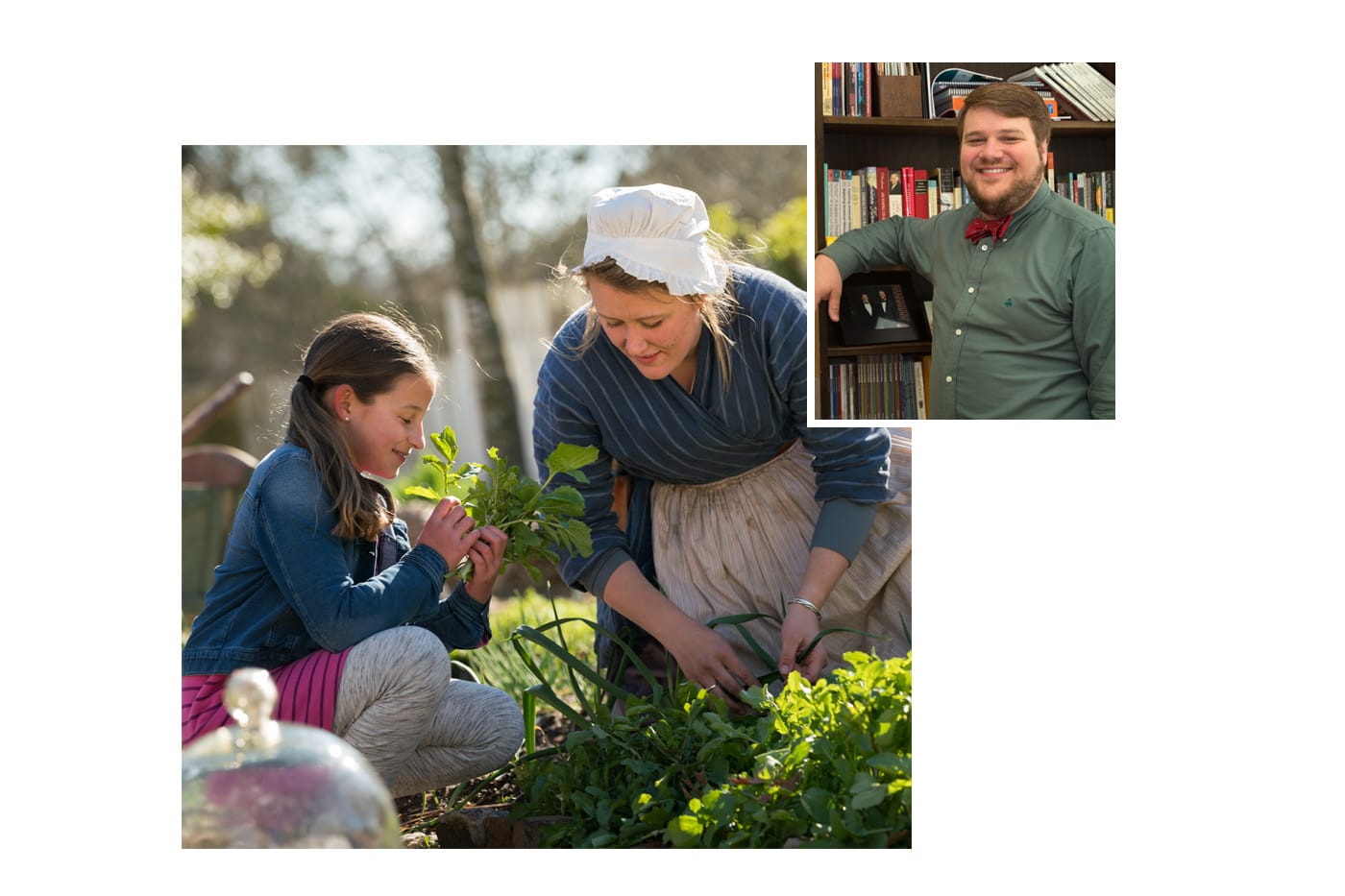
Finding Everyday Moments
Nathan Ryalls
Manager of Guest Experience
Born and raised just outside of Williamsburg, I grew up visiting the Historic Area without understanding why this place matters. Yet the stories that we share, the conversations we have, the buildings we preserve, and even the streets we stroll connect us to a rich past. What I enjoy sharing with my guests are the everyday moments — the simplicity of human life in an era of monumental change.
- How often do we walk down Duke of Gloucester Street without stopping to think about those who have walked it before? Gen. George Washington and the Rev. Gowan Pamphlet walked the same city streets but carried different burdens. You can learn about their ties to Williamsburg in the program Walk Through History With a Nation Builder.
- Did you know you can find graffiti at the Secretary’s Office? While the building may not always be open, you can see names from the past three centuries carved into the door jamb. Who were these people? And what brought them to Williamsburg?
- Our gardens are not only beautiful but offer quiet places for reflection. We are often so busy trying to get to the next thing on our bucket list, we forget to stop and smell the roses. Start at the Colonial Garden, where you can talk to the gardeners about what you can expect to see and learn on your garden stroll.
- When I visit the Presbyterian Meetinghouse, I think about those who were not Anglican and how they practiced their religion without living under the ideal of freedom of religion. What thoughts does it provoke from you?
